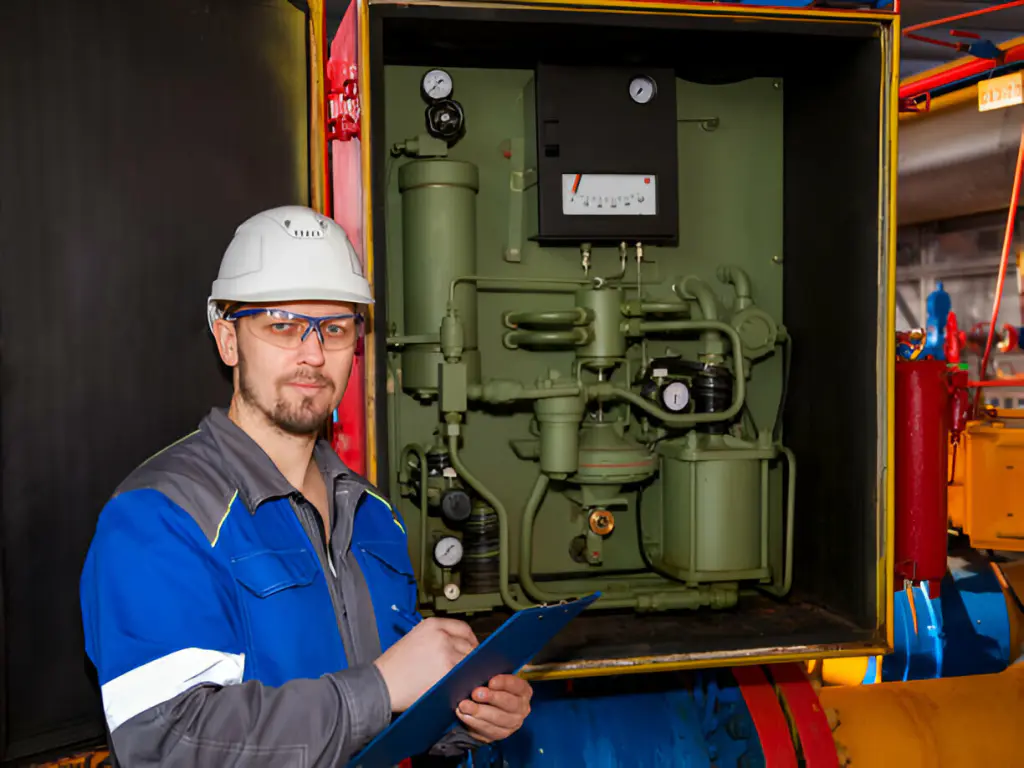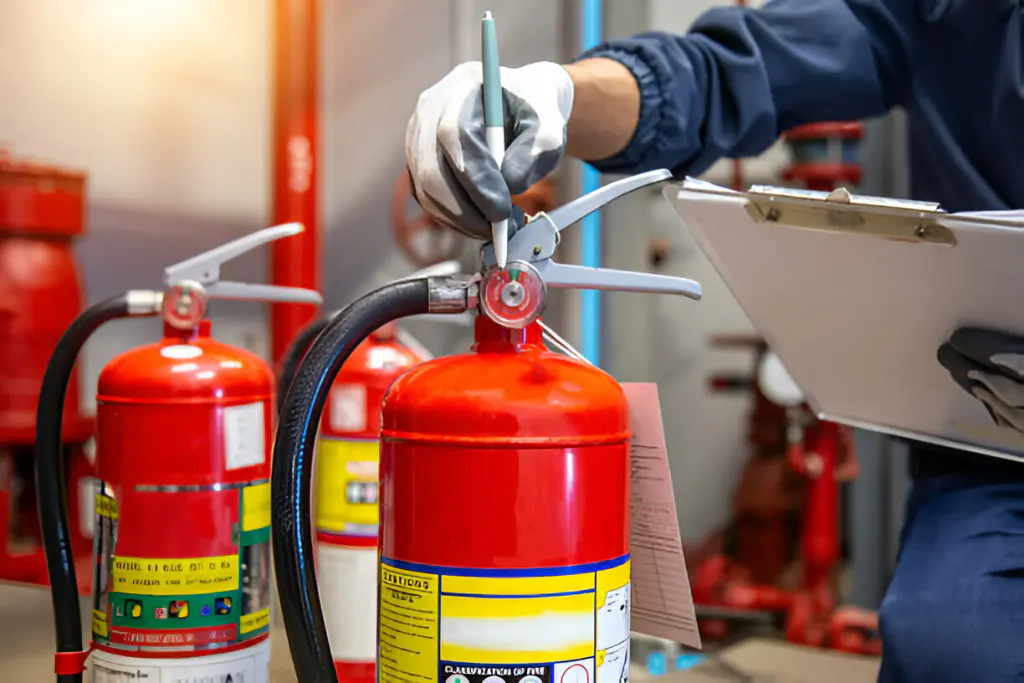When it comes to ensuring fire safety in a workplace, the question of who shoulders the responsibility of completing fire risk assessments looms large.
The intricacies of this task involve navigating various stakeholders and their roles in safeguarding against potential fire hazards. As we unpack the layers of accountability and delve into the nuances of this critical process, a clearer understanding of the obligations and duties at play emerges.

Stay tuned to unravel the complexities of fire risk assessment and discover the pivotal roles that shape this essential aspect of workplace safety.
Legal Requirements for Fire Risk Assessment
To ensure compliance with regulations, it’s imperative to understand the legal requirements for conducting a fire risk assessment. Legal obligations mandate that all businesses must adhere to accountability standards outlined in regulatory compliance guidelines. Meeting these compliance requirements is crucial as failure to do so can result in severe consequences.
Understanding legal responsibilities is key in upholding the Regulatory Reform (Fire Safety Order) 2005, which stipulates that regular fire risk assessments are mandatory for UK business owners and landlords. These assessments aren’t just a formality but a fundamental aspect of workplace fire safety. It’s the responsibility of the Responsible Person, who can be an employer, property owner, landlord, or occupier, to ensure that these assessments are conducted effectively.
Roles of Responsible Persons
Understanding the legal responsibilities of the Responsible Person is pivotal in ensuring effective fire risk assessments within business premises. Employers play a crucial role in fire risk assessment by overseeing employee safety and implementing fire safety policies.
Landlords have obligations to conduct assessments in rented properties and ensure building safety measures are in place. Facilities management is responsible for maintaining fire safety equipment and implementing emergency procedures.
Occupiers must cooperate with the Responsible Person to ensure a safe environment and adhere to fire safety protocols. Building safety falls under the jurisdiction of the Responsible Person, who must ensure that the premises meet the required safety standards and that fire risk assessments are conducted regularly to mitigate potential hazards.
Each party plays a vital role in ensuring the safety of occupants and the compliance with fire safety regulations.
Duties of the Responsible Person
As the Responsible Person for fire risk assessment, my primary duty is to ensure the implementation of fire safety policies and procedures within the business premises. Employee training is crucial to raise awareness about fire safety protocols and emergency procedures.
Identifying potential fire hazards through thorough hazard identification is essential to mitigate risks effectively. Maintaining accurate record-keeping duties is paramount to track assessments, updates, and training sessions.
Implementing safety measures such as fire alarms, extinguishers, and clear evacuation routes is vital to enhance workplace safety. Regular reviews of emergency plans and safety measures are necessary to ensure preparedness for any potential fire incidents.
Role of Risk Assessors
Moving from the duties of the Responsible Person, my focus now shifts to the pivotal role of Risk Assessors in ensuring comprehensive fire risk assessment within the business premises.

Competency training is fundamental for risk assessors to effectively conduct thorough risk assessments, identify potential fire hazards, and evaluate risks accurately. Their expertise in risk assessment contributes significantly to enhancing building safety and implementing robust fire prevention measures. Risk assessors play a critical role in ensuring compliance with legal obligations regarding fire safety within the premises.
Moreover, regular reviews and updates of fire risk assessments by competent risk assessors are essential to maintain compliance with regulations and address any evolving risks promptly. Their in-depth knowledge of health and safety legislation, coupled with appropriate training, equips them to carry out effective risk assessments and contribute to a safer working environment. By fulfilling their responsibilities diligently, risk assessors contribute significantly to the overall fire safety framework of the business premises.
Fire Risk Assessment Process
The initial step in the fire risk assessment process involves identifying potential fire hazards within the workplace. Risk evaluation is then conducted to assess the likelihood and potential impact of these hazards. Hazard identification plays a crucial role in understanding what could cause a fire and harm individuals or property.
Once hazards are identified, emergency planning is essential to establish procedures to mitigate risks and ensure the safety of occupants. Safety measures must be developed and implemented to control or eliminate the identified risks effectively. Competency training is key to ensuring that individuals understand their roles in fire safety, emergency procedures, and the use of safety equipment.
Regularly reviewing the fire risk assessment and updating procedures as needed is vital to maintain a safe work environment. It’s imperative to record findings, emergency procedures, and provide detailed fire safety training to all personnel involved.
Importance of Regular Reviews
Regularly reviewing fire risk assessments is a fundamental practice to ensure ongoing safety and compliance in the workplace. The review frequency should be established based on the complexity of the workplace, but typically, assessments should be revisited at least annually or whenever significant changes occur.
Compliance checks during these reviews ensure that the fire risk assessment aligns with current regulations and standards. Risk mitigation strategies should be updated accordingly to address any new hazards or changes in the environment.
Training updates for employees should be integrated into the review process to guarantee that all staff are aware of fire safety protocols and procedures. Emergency drills should also be conducted regularly to test the effectiveness of the emergency plan and ensure that everyone knows their roles in the event of a fire.
Frequently Asked Questions
Can a Tenant Be Considered a Responsible Person for Fire Risk Assessment in a Commercial Building?
As a tenant, I am not typically considered the responsible person for fire risk assessment in a commercial building. It’s usually the building owner’s duty, but I should still undergo fire safety training due to legal obligations and participate in the risk assessment process.
What Are the Consequences of Not Conducting Regular Fire Risk Assessments in a Workplace?
Neglecting regular fire risk assessments in a workplace can have severe consequences, jeopardizing safety and violating legal obligations. Prevention measures through assessments are crucial for risk mitigation, ensuring a safe environment and compliance with regulations.
Are There Any Specific Qualifications or Certifications Required to Be Deemed a Competent Fire Risk Assessor?
To be a competent fire risk assessor, certain qualifications and certifications are necessary to meet industry guidelines and legal obligations. Training requirements, competency standards, assessment processes, and adherence to industry guidelines are crucial.
How Often Should Fire Drills Be Practiced in a Commercial Building to Ensure Preparedness?
Fire drills in commercial buildings should be practiced regularly for emergency response readiness. Safety protocols, evacuation procedures, and risk mitigation strategies are honed through preparedness training. Ensuring staff familiarity with these procedures is crucial.
Is There a Specific Timeline Within Which a Fire Risk Assessment Must Be Reviewed and Updated to Comply With Regulations?
I review fire risk assessments annually to ensure compliance with regulations. Failure to update assessments promptly can lead to legal consequences and risks. Regular updates align with industry standards and enhance the risk assessment process’s effectiveness.
Conclusion
In conclusion, the completion of fire risk assessments is a critical task that must be undertaken with diligence and care.
By understanding the legal requirements, roles of responsible persons, and the importance of regular reviews, we can ensure that our workplaces are safe from the devastating impact of fires.
It’s imperative that all stakeholders work together to fulfill their duties and prioritize fire safety to protect lives and property.









